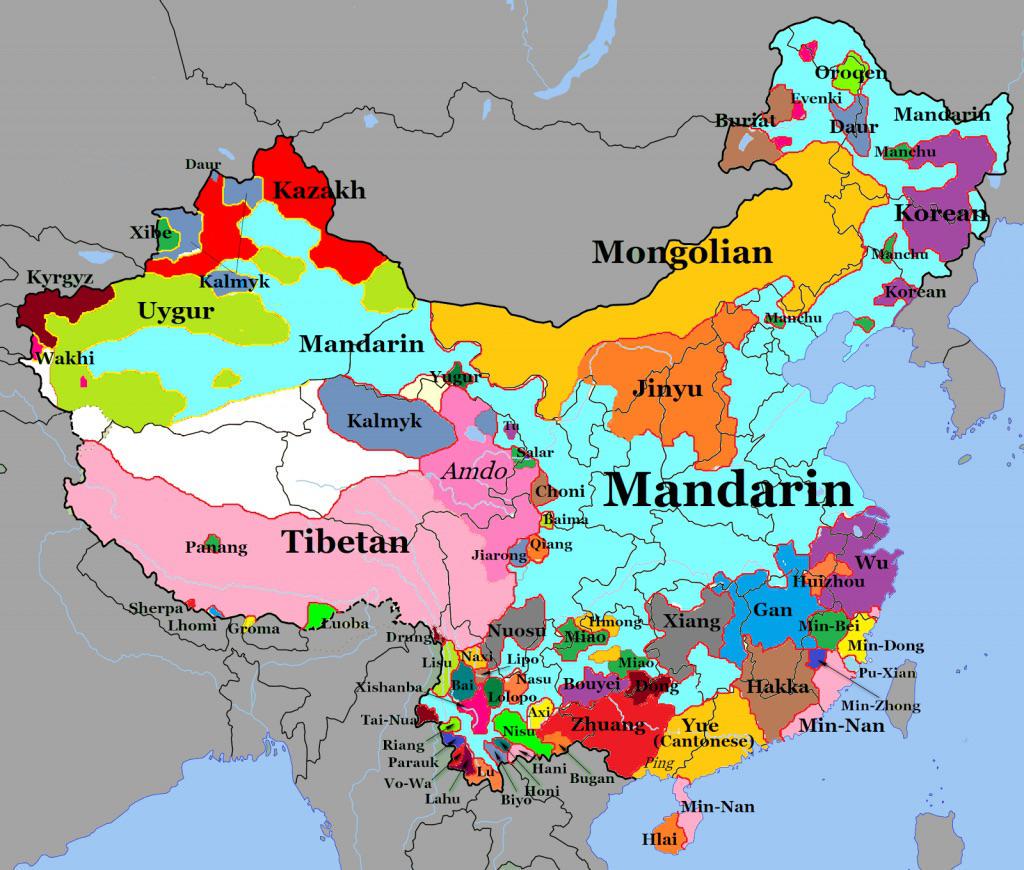Languages Spoken in China Map


David Chen
Data Visualization Specialist
David Chen is an expert in transforming complex geographic datasets into compelling visual narratives. He combines his background in computer science ...
Geographic Analysis
What This Map Shows
The "Languages Spoken in China Map" provides a comprehensive overview of the diverse linguistic landscape across the vast regions of China. It highlights the various languages and dialects used by different ethnic groups, showcasing the rich tapestry of communication that exists within the country. With over 300 languages spoken, China is home to a multitude of linguistic traditions, reflecting its complex history and multicultural society. From Mandarin, the official language, to lesser-known dialects spoken in remote areas, this map serves as a valuable resource for anyone interested in understanding the linguistic diversity of this ancient civilization.
Deep Dive into Languages in China
China's linguistic diversity is rooted in its long history and vast geography. The most widely spoken language is Mandarin, known as Putonghua, which is the official language of the People’s Republic of China. Interestingly, around 70% of the population speaks Mandarin, making it one of the most spoken languages in the world. However, the linguistic landscape is far more complex than just Mandarin.
Apart from Mandarin, there are several major language families present in China, including Sino-Tibetan, Tai-Kadai, Hmong-Mien, and Altaic. For instance, Cantonese, another prominent dialect, is primarily spoken in Guangdong province and Hong Kong. What’s fascinating is that Cantonese retains many archaic features that have been lost in Mandarin, making it a unique linguistic entity.
In addition to these major languages, China is home to numerous minority languages. For example, the Tibetan language is spoken in Tibet and parts of Qinghai and Sichuan. Similarly, the Uighur language is prevalent in the Xinjiang region. These languages not only represent the rich cultural heritage of their respective ethnic groups but also face challenges in preservation due to political and social factors.
Moreover, regional dialects can vary significantly even within a single province. Take Sichuanese, a dialect of Mandarin spoken in Sichuan province; it is distinct enough that native Mandarin speakers from other regions may struggle to understand it. This variation showcases how geography influences language development, leading to a rich mosaic of dialects across the country.
Regional Analysis
When examining the map, it becomes clear that linguistic diversity is not uniformly distributed across China. Northern regions predominantly speak Mandarin, but as you move south, the prevalence of dialects such as Cantonese, Wu, and Min becomes more pronounced. For instance, in Shanghai, the local dialect, Shanghainese, is widely spoken alongside Mandarin, while in Fujian province, various Min dialects dominate the conversation.
In the northwest, languages like Uighur and Kazakh are spoken in regions with significant ethnic minority populations. The linguistic diversity here reflects the historical migration patterns and cultural exchanges that have occurred over centuries. In contrast, the northeastern provinces have a strong presence of Mandarin and regional dialects, but fewer minority languages.
Interestingly, the linguistic map also highlights areas where languages are endangered. For example, the languages spoken by the Yi people in Yunnan and the Qiang people in Sichuan are at risk due to limited transmission to younger generations. The preservation of these languages is crucial for maintaining cultural identity and heritage in these regions.
Significance and Impact
Understanding the languages spoken in China is not just a matter of linguistic interest; it has significant implications for social cohesion, education, and policy-making. For instance, the promotion of Mandarin as the national language has facilitated communication across the nation, but it has also led to concerns over cultural homogenization and the decline of minority languages.
Moreover, the linguistic diversity in China presents challenges in education, particularly for children from ethnic minority backgrounds who may not speak Mandarin at home. This situation can lead to educational disparities, prompting the need for bilingual education programs that respect and incorporate local languages.
Looking ahead, the future of language in China will likely be shaped by globalization and technological advancements. As digital communication becomes more prevalent, younger generations may gravitate towards Mandarin and other major languages, potentially putting smaller languages at risk. However, there is also a growing movement toward the revitalization of local languages, driven by cultural pride and community initiatives.
In conclusion, the "Languages Spoken in China Map" captures not just the linguistic diversity of this vast nation, but also reflects the cultural richness and complexities of its people. By understanding these languages, we gain insight into the broader social fabric of China and the ongoing challenges and triumphs of its linguistic communities.
Visualization Details
- Published
- October 9, 2025
- Views
- 10
Comments
Loading comments...